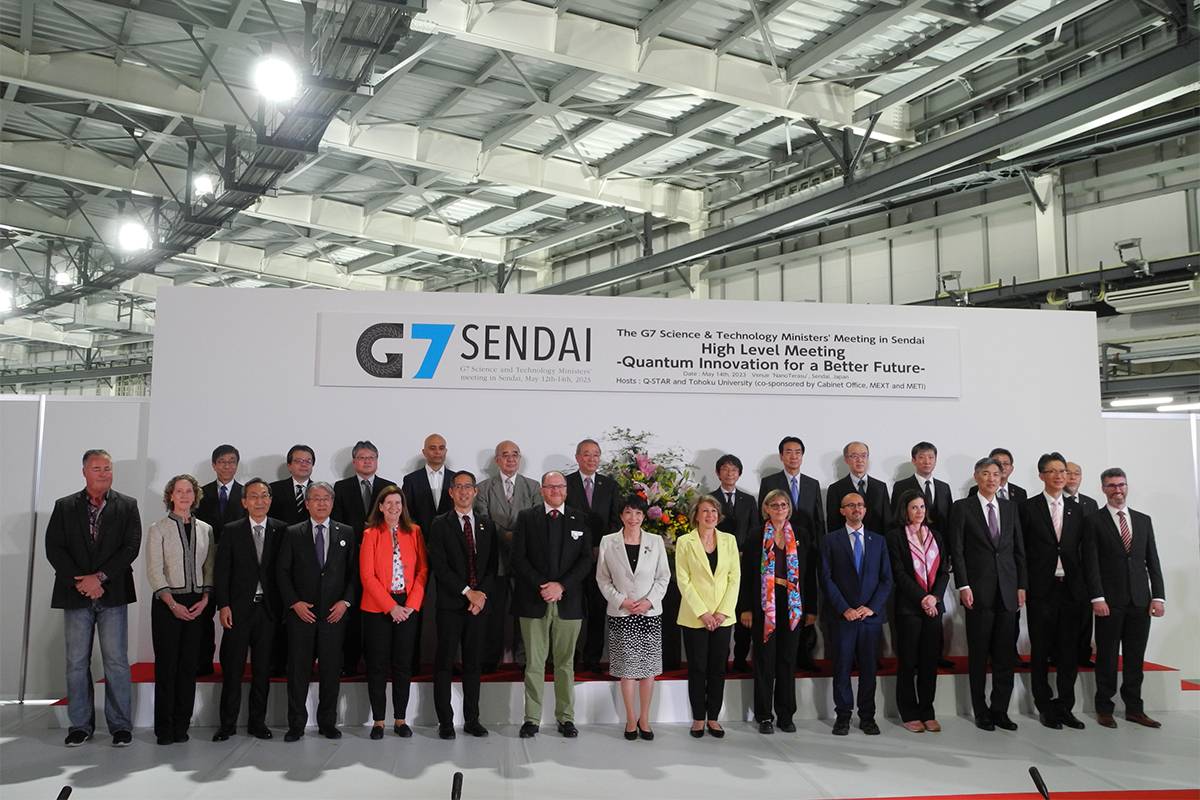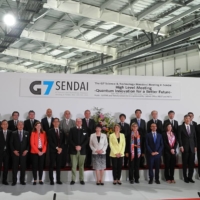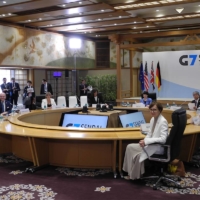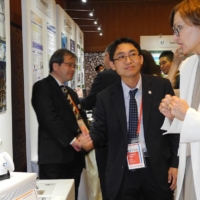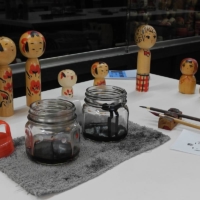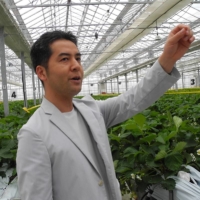The G7 Science and Technology Ministers’ Meeting in May put the spotlight on Sendai’s cutting-edge research and technology, its growing capacity to host world-class meetings, as well as milestones in its ongoing recovery from the 2011 Great East Japan Earthquake. At the same time, delegations from the most powerful nations in the world were treated to local specialties and attractions with winning hospitality.
Over two days, the delegations gathered at a traditional inn in the Akiu Onsen area, about 30 minutes from central Sendai, where they discussed inclusiveness in science, sharing research results to solve global problems, and the ethical use of research outcomes.
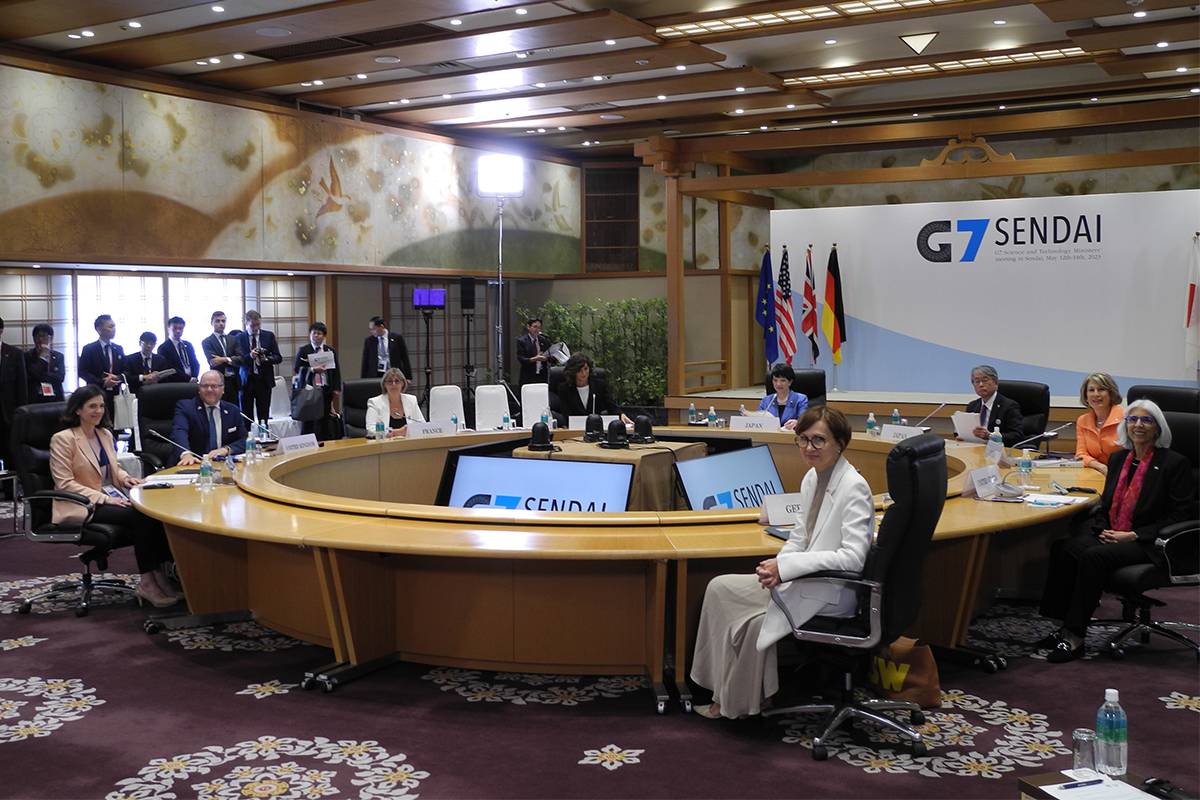
“Technologies such as artificial intelligence, quantum technology, biotechnology, and fusion, and other clean technologies are central to the green and digital transition as well as to economic and national security,” a communique issued after the meeting said.
Sendai, in collaboration with Tohoku University and other private-sector partners, is well advanced in the development or use of many of those technologies. At a news conference where she presented a summary of the talks, Japanese technology minister Sanae Takaichi said, for this reason, Sendai was deemed an appropriate host. Sendai was named a Global MICE (Meeting, Incentive, Convention, Event/Exhibition) venue by the government in 2015 and has since been dedicating resources to improving venues and facilities. In 2016, the city hosted the G7 finance ministers’ meeting.
“The city is being developed through cutting-edge technology in collaboration with Tohoku University in various fields, such as the environment, disaster prevention, AI and medical care. This is a suitable place from which to demonstrate to the world Japan’s capabilities in these fields, and also to show this region’s excellent infrastructure,” Takaichi said.
A day after the meeting ended, delegations toured NanoTerasu, a synchrotron radiation facility at Tohoku University that will become fully operational next year. Ministers, academics and other related parties attended a high-level meeting on quantum innovation at the large, disk-shaped laboratory, which will use light invisible to the naked eye to illuminate minute particles and explain the workings of materials and living things.
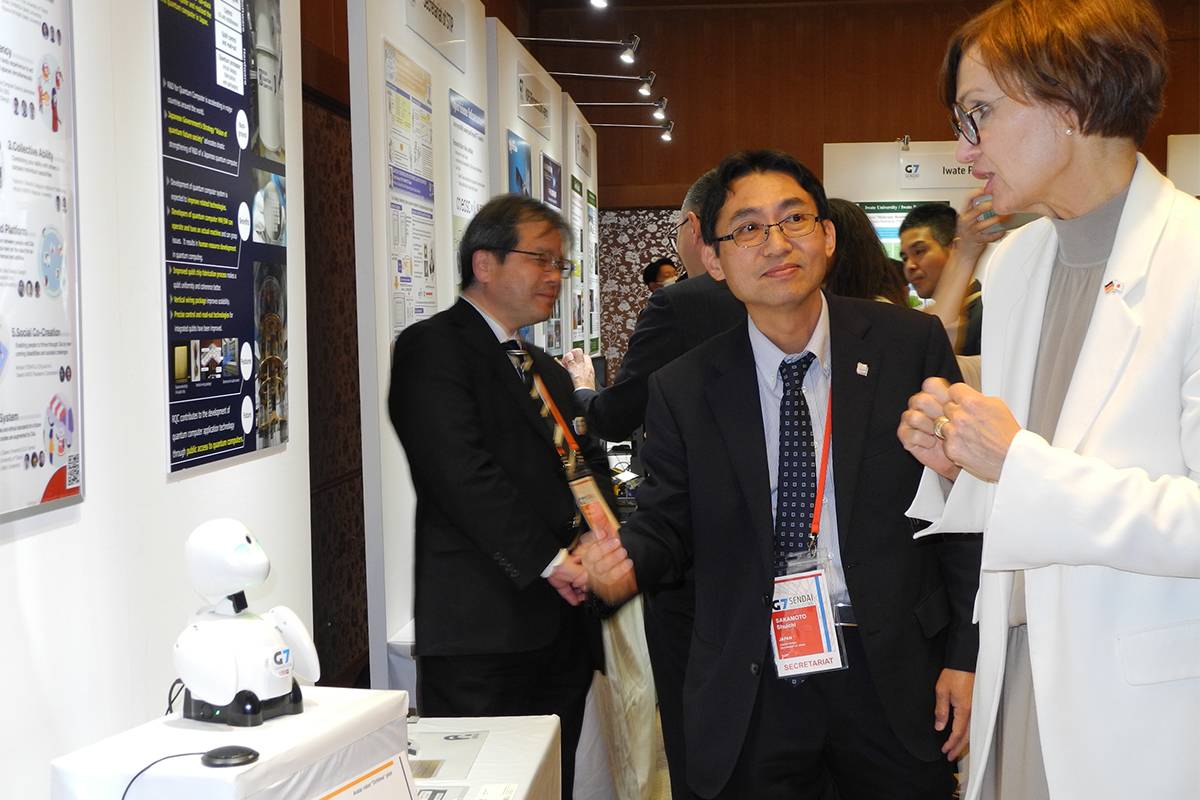
Another stop on the ministers’ list was the International Research Institute for Disaster Science, also at Tohoku University. Here, they heard of using multidisciplinary approaches from robotics to history in disaster risk mitigation. At the meeting site, the institute’s director, Shinichi Kuriyama, manned a booth and explained how the institute is using deep sea transponders to detect earthquakes, as well as its development of a data-driven simulation of the 2011 disaster.
“The transponder is placed in the deep ocean to measure the movement of the plate, and a big movement means a big earthquake. GPS cannot reach the deep ocean, so we use sound waves, and this transponder can catch that,” Kuriyama said. He added that, using data from a simulation of the 2011 quake, “we can predict the risk of where and when a tsunami will reach, then send an alert to people, saying if you’re (in a particular location) in three minutes, this will happen, so please leave.”
Various entities in Sendai are using technology as part of recovery efforts and in social projects. In 2015, the Sendai Framework for Disaster Risk Reduction 2015-2030 was formulated, providing guidelines for efforts and policy. Every year since 2017, Sendai has hosted the World Bosai Forum, bringing together academics, commercial interests and regular citizens to discuss bōsai, or disaster preparedness.
The connected Sendai Bosai Tech Innovation Platform focuses on supporting the development of disaster solutions that can become available to the general public at different price points. Even though it is run by the Sendai Municipal Government, Bosai Tech is one example of the public-private partnerships at the core of technology projects in the city. Companies from all over the world, not just the G7 member states, can apply to have their solutions funded by the platform.
While it is committed to rebuilding, the city is also aware of the importance of preserving memories of the disaster. Attendees at the G7 technology ministers’ meeting participated in a somber gathering at Arahama Elementary School, where 300 students and other residents took refuge from the tsunami and were rescued by helicopter from the roof. The school building, only a short distance from the coast, is now a museum dedicated to educating people about the catastrophic event.
Though the area around Arahama is uninhabitable, as are other places around the city deemed to be at high risk, some businesses have been striving to return even a sliver of normalcy and hope to residents. In the Fujitsuka area, for example, on a site where there was nothing but debris in the aftermath of the tsunami, now sits a complex with a public bath, restaurants, cafes and shops. Called Aquaignis, the complex uses a geothermal heating system as part of its power supply, which has reduced its energy consumption by a third compared with similar facilities.
“Our goal is to not use energy from fossil fuels, at all,” Aquaignis Manager Masataka Hirama said, adding that the company had received funding from the Miyagi Prefectural Government to look into making that a possibility.
“This is a commercial complex, but we are committed to aligning our practices with the SDGs (U.N. sustainable development goals) as much as possible, which many people appreciate, so people come here just because of that. Also, Japan is a country of volcanoes and onsen (hot springs), but people don’t harness geothermal heat, so we hope to be a model for how that can be successfully done. This is an uninhabitable area, but we can still bring people together and somehow return some of the previous liveliness to the area,” Hirama said.
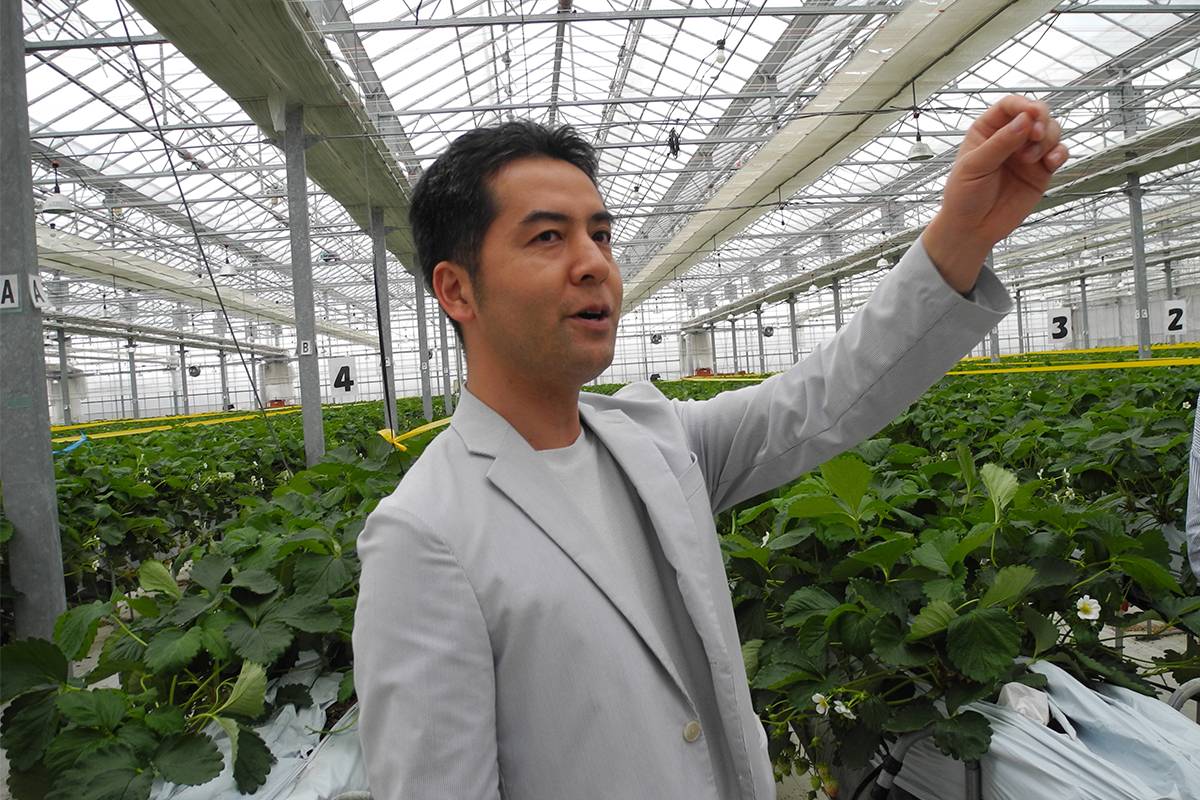
Not too far from Aquaignis in the town of Yamamoto, another entity, the General Reconstruction Association, has been spreading agricultural technology after being spurred into action by the 2011 quake and tsunami. The Watari district, particularly the town of Yamamoto, is traditionally known for strawberry production, but the GRA says about 95% of greenhouses were destroyed by the tsunami. Initially, the company’s sole aim was to create jobs. A decade later, everything from temperature to humidity control in its greenhouses is automated, and its Migaki Ichigo brand strawberries have been known to sell for ¥1,000 each. The GRA’s Hiroaki Yamane said the company also operates a school to teach particularly young farmers how to use information technology in agriculture.
Aquaignis and the GRA were part of Sendai area tours offered alongside the G7 meeting. Participants were able to visit areas such as the Akiu Craft Village to see artisans at work on traditional wooden kokeshi dolls and even make their own. Other attractions included the dramatic Akiu Waterfall, Matsushima Bay with its 250 islands, and Zuiganji temple, which was built by Sendai’s founder Date Masamune.
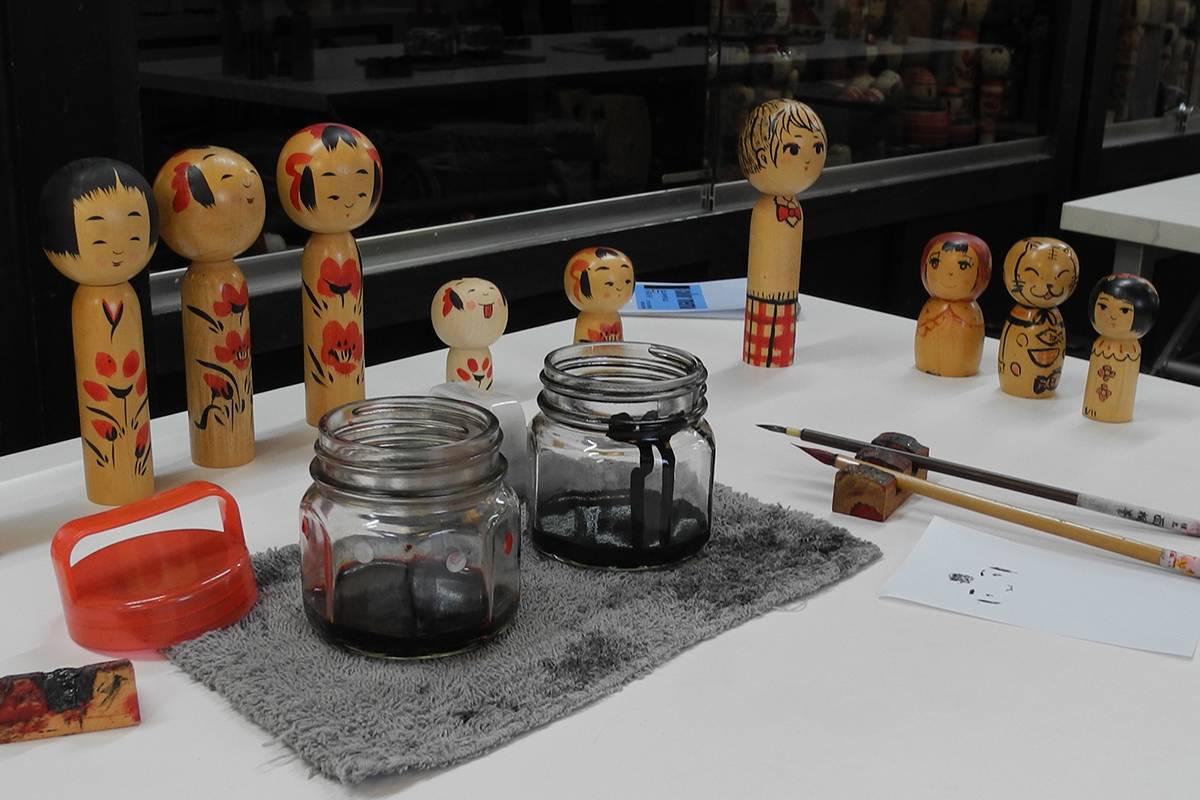
An evening program, Akiu Night, featured wine and sake from the Tohoku region, and local specialties like Sendai beef and zunda mochi — sweet soybean paste over soft rice dumplings. Akiu no Taue Odori, a traditional rice-planting dance that has been named a UNESCO Intangible Cultural Heritage, and entertainment from renowned pianist Eri Chichibu formed part of the package.
The city feted its guests, but Sendai’s offerings are for everyone, not just dignitaries. In fact, long thought of as the gateway to Tohoku, Sendai is noted for unbiased, charming and all-knowing hospitality that even extends to highlighting the attractions and traditions of its neighbors. Still, impossible to ignore is Sendai’s own natural beauty — from a bay that Einstein is said to have visited just to see the moon, to the wild lavender wisteria languidly adorning verdant mountainsides. In addition, the city’s feverish implementation of public-private social development projects driven by science and technology, and its seemingly boundless resilience as it builds back from the disastrous events of 2011, are simply outstanding.
This page is sponsored by the Sendai Municipal Government.



